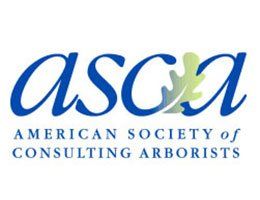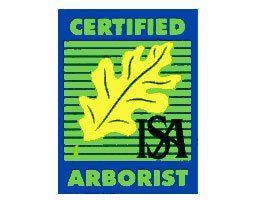This is a placeholder for the Yext Knolwedge Tags. This message will not appear on the live site, but only within the editor. The Yext Knowledge Tags are successfully installed and will be added to the website.
Tree Care and More
Tree Care and More
Emergency Tree Services | Senior Discounts | Se Habla Español
Emergency Tree ServicesSenior DiscountsSe Habla Español
This is a placeholder for the Yext Knolwedge Tags. This message will not appear on the live site, but only within the editor. The Yext Knowledge Tags are successfully installed and will be added to the website.
All About Street Trees
Street trees are trees that are recommended for planting near sidewalks and medians in urban environments. They are slow growing and because of this, the roots of these trees are less likely to destroy sidewalks and roads. This makes them ideal for pedestrian areas. These are also recommended for placement near power lines.
At AAA Arbor First, we're well versed in the best type of street trees for every location and situation.
Popular Types of Street Trees
Evergreen Maple
Acer Paxii
- Semi-evergreen
- Small green flowers appear with leaves
Silk Tree, Mimosa
Alibizia julibrissin
- Deciduous
- Flowers around late summer
- Pests: webworms and mealybugs
- Mimosa wilt
- Needs pruning
- Heavy flower droppings
- Low spreading
Hong Kong Orchid Tree
Bauhinia blakeana
- Partially deciduous
- Flowers bloom in winter
Purple Orchid Tree
Bauhinia variegata
- Semi-evergreen
- Flowers in spring
- Most commonly planted orchid tree
Crown of Gold Tree
Cassia excelsa
- Semi-evergreen
- Bright yellow flowers in late summer
Gold Medallion Tree
Cassia leptophylla
- Nearly evergreen
- Deep yellow flowers through July and August, 16" pods
- Low branching, spreading habits require careful training
- Prune after flowering, pods create litter problems
Eastern Redbud
Cercis canadensis
- Deciduous
- Magenta flowers in summer, fruits in summer. New seed pods hold through winter
Chinese Fringe Tree
Chionanthus retusus
- Deciduous
- Flowers from April to July, female trees will produce berries by late summer
Chitalpa
Chitalpa tashkentensis
- Deciduous
- Flowers bloom from May to November
- Flowers are not pedestrian hazard
- High wind tolerant
- Shelter from ocean winds at sea coast exposure
- Hybrid species between Catalpa and Chilopsis species
Bronze Loquat
Eriobotrya deflexa
- Evergreen
- Flowers from December through March, Pomes from February to May
- Spreading habit requires judicious pruning
- Pests: fire blight, powdery mildew, scale
Raywood Ash, Claret Ash
Fraxinus oxycarpa
- Deciduous
- No flowers
- Tolerant of a wide variety of soil types
- Prefers sandy to clay loam
White Mulberry, Silkworm Mulberry, Fruitless Mulberry
Morus alba
- Deciduous
- No flowers
- Pollution tolerant
- Adapted to withstand dry conditions, sandy to heavy clay, salinity, alkalinity, heat and strong winds
- Pests: sooty canker, spittlebug
- Stress tolerant
- Heavy producer of pollen in March and April
- Large leaves can cause litter
Rhaphiolepsis
Rhaphiolepsis
- Evergreen
- Flowers bloom in late spring, some flowering from late fall to spring
- Pests: Aphids, fireblight
- Pruning helps shape the tree and avoid conflict
Water Gum, Small leafed Tristania, Swamp Myrtle
Tristania laurina
- Evergreen
- Flowers mostly May-July
- Tolerates light shade
- Moist conditions
For a more comprehensive list of street trees or for more information, please visit the Street Tree Seminar, Inc
website.
Choosing the Right Tree for You
When it comes to varieties of trees, the list is endless. Between the sheer number of species and the addition of hybrids, it seems infinite, but the question remains: which tree is right for you?
In an effort to answer this question, there is one additional one you must ask that is very often overlooked: Where do you live?
This is important because not all trees fair the same in every climate and a difference of a few miles could make all the difference between life and death for your investment. That is where the idea for "right tree, right place" comes into play. Just as the country is divided into states, and the states into counties, there are also climate zones.
Climate Zones
Climate zones represent five important factors that make each climate unique:
- Latitude
The generally accepted rule is the farther you move away from the equator, the longer and colder the winters. The closer you get to the poles the number of daylight hours increase in the summer and decrease in the winter. - Elevation
Higher elevated gardens tend to see longer, colder winters. This is often accompanied by intense sunlight and lower temperatures at night. - Ocean influence
Pacific Ocean weather tends to be mild and moist in the cool season. - Continental air influence
The North American continent creates its own weather, which is generally colder in the winter, hotter in the summer and more likely to get precipitation than coastal regions. As you move farther inland these effects become stronger. Wind becomes a bigger factor especially in open regions such as the plains. - Mountains and hills
Mountains and hills provide barriers which will determine whether the area will be subject to more marine air or continental air.
For example, coastal ranges take some of the marine influence out of the air as it flows towards the east. On the eastern side of the Rockies, the air tends to be dominated by arctic and continental air. The mountains in Hawaii pull moisture from the air which gives the large islands distinctive wet and dry sides. - Micro-climate
Though it was not listed originally, micro-climate is especially important because while you may live in a generally cooler area you might find that certain areas close by seem to be slightly warmer.
For example, south-facing slopes get more solar heat than flat land, while northern slopes get less. The slope also plays a role in the movement of heat. Warm air rises, cold air sinks. Hillsides in winter are colder than the hilltops above or the ground below. This is called a thermal belt and flat areas where cold air flows are called cold air basins. Micro-climate affects every garden.
The Central California Coast's Climate Zones
California's Central Coast is dominated by three climate zones: 15, 16 and 17.
Climate zone 15
Climate zone 15 runs from Cambria through Santa Maria. It has a wide growing season that goes from March to November. Some important characterizations are moist atmosphere, cool summers and mild winters.
Climate zone 15
Climate zone 15 runs from Cambria through Santa Maria. It has a wide growing season that goes from March to November. Some important characterizations are moist atmosphere, cool summers and mild winters.
A few larger central coast towns within this zone are San Luis Obispo, Arroyo Grande, Nipomo and Santa Maria.
Climate zone 16
Climate zone 16 runs from Monterey to Lompoc. Its growing season ranges from the end of February to the end of November. It's considered one of the finest horticultural climates in Northern California and consists of thermal belts dominated by ocean air 85% and inland weather 15% of the time.
Climate zone 16
Climate zone 16 runs from Monterey to Lompoc. Its growing season ranges from the end of February to the end of November. It's considered one of the finest horticultural climates in Northern California and consists of thermal belts dominated by ocean air 85% and inland weather 15% of the time.
Its typical lows are between 32-19 degrees and gets more heat in summer than zone 17 and has warmer winters than zone 15.
Climate zone 17
Here, the growing season ranges from March to early December. It is dominated by ocean air 98% of the time. It has mild, wet and almost frostless winters and cool summers with frequent fog or wind. The fog reduces the intensity of light and sunshine, which affects the more heat-loving plants, which could lead to fewer flowers / fruits.
The lows range from 36-23 degrees and highs during the summer range from 60-75 degrees. The larger towns within this zone are Morro Bay, Pismo, Cambria, San Simeon, Monterey and Santa Cruz.
Here, the growing season ranges from March to early December. It is dominated by ocean air 98% of the time. It has mild, wet and almost frostless winters and cool summers with frequent fog or wind. The fog reduces the intensity of light and sunshine, which affects the more heat-loving plants, which could lead to fewer flowers / fruits.
The lows range from 36-23 degrees and highs during the summer range from 60-75 degrees. The larger towns within this zone are Morro Bay, Pismo, Cambria, San Simeon, Monterey and Santa Cruz.
Small to Medium Sized Trees
- Silk Tree or Mimosa
- Hong Kong Orchid Tree
- Purple Orchard Tree
- Crown of Gold Tree
- Gold Medallion Tree
- Eastern Redbud
- Chinese Fringe Tree
- Chitalpa
- Bronze Loquat
- Raywood Ash / Claret Ash
- White Mulberry / Silkworm Mulberry / Fruitless Mulberry
- Rhaphiolepis
- Water Gum / Small-Leafed Tristania / Swamp Myrtle
- Paxii Maple / Evergreen Maple / Oblong Maple
- Purple Leaf Plum
- Japanese Maple
- Weeping Bottlebrush
- Pygmy Date Palms
A Family-Owned Business
Founded in 1980, AAA Arbor First is a family-owned company led by Certified Arborist Robert Schreiber. Give us a call at (805) 772-5400 for more information and if we miss your call, you'll hear back within 24 hours.
SERVICE AREA
This is a placeholder for the Yext Knolwedge Tags. This message will not appear on the live site, but only within the editor. The Yext Knowledge Tags are successfully installed and will be added to the website.
and surrounding areas
CALL US
EMAIL US
HOURS
This is a placeholder for the Yext Knolwedge Tags. This message will not appear on the live site, but only within the editor. The Yext Knowledge Tags are successfully installed and will be added to the website.
This is a placeholder for the Yext Knolwedge Tags. This message will not appear on the live site, but only within the editor. The Yext Knowledge Tags are successfully installed and will be added to the website.
Hi. Do you need any help?
Privacy Policy
| Do Not Share My Information
| Conditions of Use
| Notice and Take Down Policy
| Website Accessibility Policy
© 2024
The content on this website is owned by us and our licensors. Do not copy any content (including images) without our consent.




Share On: